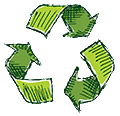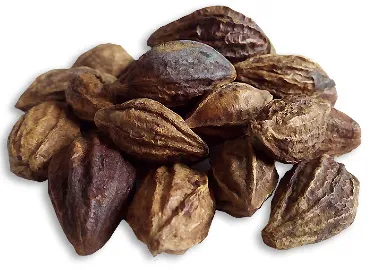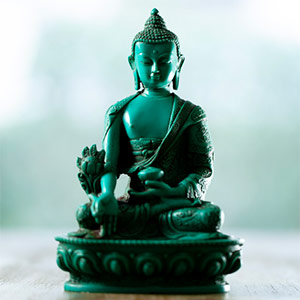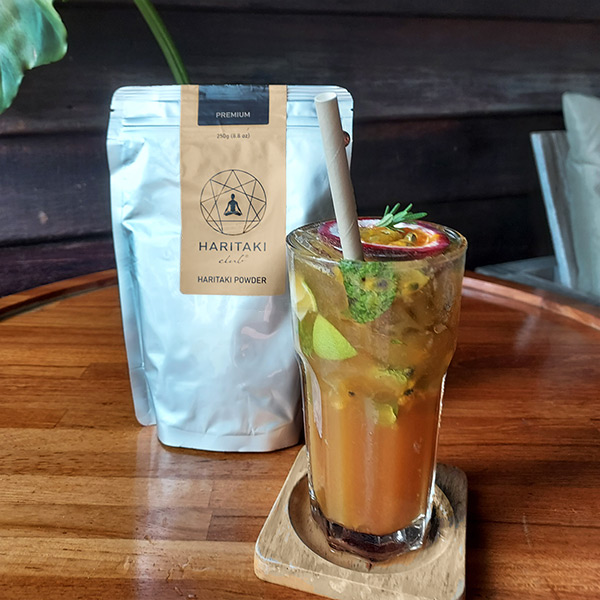HARITAKI
The golden Fruit
Haritaki Club
We provide you with organic Haritaki, in premium quality, from the southern Himalaya regions.
Premium Quality


Laboratory tested by an independent body
Quality is our top priority. To ensure high product quality, we have every new delivery microbiologically analyzed by an independent European laboratory.AGROLAB Laboratory Certificate

click to enlarge
Fully recyclable packaging
These provide the best protection against moisture, oxygen, and UV rays, making them the most suitable for Haritaki powder. By thermolaminating for airtight sealing, we avoid solvent-based adhesives, which are harmful to the environment.

Quality is very important to us

Our quality attributes
- Extra finely ground
Our powders are extra finely ground, which increases the surface area of the powder.
- Certified
Our organic products come from controlled organic cultivation in the region south of the Himalayas. To ensure optimal product quality, they are gently dried.
- High quality
Our extract is produced in a gentle aqueous extraction process, in a 1:10 ratio, by a specialized certified company.
- Laboratory tested
All batches are tested by an independent certified laboratory in Germany or Austria for molds, heavy metals, E. coli, and salmonella.
- Delicate
Our refined Haritaki fruits are produced by a certified company in Thailand specifically for Haritaki Club, according to a traditional recipe.
Traditional Use and Origin
Haritaki (lat: "Terminalia chebula") is a fruit that has been used for millennia in various cultures in different forms, primarily as a powder.
The old Sanskrit name "Haritaki" translates to "The one who comes from the house of God". The Haritaki fruits grow on trees up to 25 meters high in India and Southeast Asia.Further information on "Terminalia Chebula" can be found in independent sources online.

Read more
Click on the buttons to read more.
What is Haritaki?
The name "Haritaki" comes from Sanskrit, an ancient Indian language. Literally translated, "Haritaki" means "that which comes from the house of God".Haritaki is the fruit of the evergreen Myrobalan tree, native to India and Southeast Asia, also known as the Haritaki tree. It prefers a tropical climate for its full growth and belongs to the Combretaceae family. The tree can grow up to 30 meters tall.
In some regions, the Haritaki tree has been placed under nature protection.The Haritaki Fruit
The Haritaki fruit is elongated olive-shaped and about 3-5 cm in size. Its color varies from yellowish-green to reddish-brown, depending on the degree of ripeness. Its surface can be slightly ribbed or furrowed.Haritaki is consumed in various forms – fresh, pickled or dried as powder. In addition to the fresh fruits, the powder variant is the most common.
Haritaki powder
The production of Haritaki powder begins with the harvest of the ripe Haritaki fruits. The Haritaki fruits are usually harvested once a year, they reach their full maturity mostly in autumn, although this can vary regionally and climatically.After harvesting, they are carefully cleaned and dried. The drying process can vary depending on traditional practice and manufacturer. Subsequently, the dried fruits are ground.
Depending on the region, Haritaki is also known as Harad, Myrobalan, Harita, Hallel or Kadukkai.More about this here: Haritaki - different names

What is Triphala?
Triphala is a traditional and popular Ayurvedic powder blend.The word Triphala consists of "Tri" (Three) and "Phala" (Fruits), meaning "Three-Fruit". The reason for this designation is that Triphala is composed of the powder of three dried fruits, traditionally mixed in a 1:1:1 ratio, i.e., in equal parts.
The three fruits of Triphala:- Haritaki (Terminalia chebula)
Haritaki, also known as Chebulic Myrobalan, is a large tree native to South Asia. The fruits of Haritaki are small, oval drupes with a bitter, astringent taste.
- Bibhitaki (Terminalia bellirica)
Bibhitaki, also known as Baheda, is a large tree native to India and other parts of South Asia. The fruits of Bibhitaki are oval, brown drupes with a slightly bitter taste.
- Amalaki (Emblica officinalis)
Amalaki, also known as Amla or Indian Gooseberry, is a tree native to India and other parts of South Asia. The fruits of Amalaki are small, round berries with a sour, astringent taste.
Our organic Triphala products are blended according to this traditional formula. They come from controlled organic farming, were gently dried after harvest, and then ground into a fine powder by a certified processing facility.
Cultural significance of Haritaki
Buddha and Haritaki
Haritaki is deeply rooted in many Asian cultures.This deep cultural connection is expressed in the fact that Buddha is depicted in countless Medicine Buddha statues holding a Haritaki fruit and a Haritaki branch in his hands.

Haritaki in Tibet
Haritaki in powder form has been used by monks, sages, and yogis since ancient times.There are historical accounts describing that Tibetan monks imported Haritaki powder centuries ago, sometimes via arduous routes, from the warmer Himalayan regions. This shows the special significance of Haritaki in Tibet's culture.

Haritaki in Yoga
In yoga, Haritaki is traditionally used as part of symbolic purification ceremonies before Pranayama breathing exercises.Haritaki: Forms of Administration
Haritaki is commonly consumed in the form of fruits, refined fruits, powder, capsules, and extract capsules.Fresh Haritaki Fruits
Haritaki fruits have a complex and multifaceted flavor that can vary slightly depending on the degree of ripeness and preparation.
They can be described as a mixture of several flavors:- Sour: A distinct acidity is noticeable, especially in young, green fruits.
- Bitter: A subtle to distinct bitterness is often present, especially in dried fruits.
- Astringent: Haritaki has an astringent effect in the mouth, similar to unripe fruits or strong tea.
- Sweetish: In some varieties or in ripe fruits, a slight sweetness can shine through.
- Slightly spicy: A hint of spice or spiciness sometimes rounds off the profile.
Refined Haritaki Fruits
Since the bitter note of Haritaki is not for everyone, they have been traditionally refined with real licorice since ancient times. This gives the fruits a sweet note and turns them into a true delicacy.We offer Haritaki fruits refined with real licorice. They were specially produced for Haritaki Club by a certified specialist company in Thailand and are an ideal supplement to daily Haritaki powder (or capsule) intake.
Haritaki Powder
Haritaki has been taken in powder form since ancient times, especially in India and Southeast Asia. The powder has a long tradition and, if stored dry, has a long shelf life. It is documented that Tibetan monks have been importing Haritaki powder from the southern regions of the Himalayas for many centuries.We offer high-quality organic Haritaki powder in various variants.
Haritaki Capsules
Those who find the bitter Haritaki powder too bitter, or prefer a simple and quick method of Haritaki intake, ideally resort to Haritaki capsules.We offer Haritaki powder in ultra-pure HPMC capsules. HPMC capsules are capsules whose shell consists of hydroxypropylmethylcellulose (HPMC), a vegetable material used as an alternative to gelatin. Ultra-pure means that no additives have been added to the HPMC. Each of our organic Haritaki capsules contains 500mg of pure, extra-finely ground organic Haritaki powder.
Haritaki Extract Capsules
Haritaki extract powder is a concentrated powder obtained from Haritaki powder through an extraction process. The water-soluble components are extracted and then processed into a fine powder.- Extraction: The Haritaki powder is soaked in water to dissolve the desired ingredients.
- Concentration: The liquid is filtered and concentrated by gentle evaporation processes.
- Drying: The concentrated substance is dried until a powder is formed.
We offer high-quality Haritaki extract capsules. Each of our capsules contains 300mg of fine Haritaki extract powder.
Haritaki in Research and Tradition
Haritaki has a millennia-old tradition in Asia.
In ancient texts such as the Charaka Samhita, Sushruta Samhita, and the Ashtanga Hridaya, all important works of Ayurvedic literature, Haritaki is extensively described.Haritaki in Science
Western science began to research Haritaki (Terminalia Chebula) more intensively at the end of the 20th century. Since then, hundreds of scientific studies have been published that deal with the properties of Haritaki (Terminalia Chebula) described in ancient texts.
Since we are not allowed to write anything about the study content due to strict EU regulations, we refer at this point to relevant secondary literature that can be found, for example, in online portals such as PubMed or the National Library of Medicine.
Side Effects of Haritaki
Haritaki is well tolerated by most users. In rare cases, mild reactions may occur, especially during initial use. Some users report temporary diarrhea or other mild discomfort. In isolated cases, drowsiness, dizziness, or headaches may also be observed.When should the use of Haritaki be reviewed?
If you have existing health problems or concerns about taking Haritaki, we recommend discussing its use with a doctor. This applies especially in the following cases:- During pregnancy
- In cases of dehydration (low fluid intake)
- When taking medications
- With high alcohol consumption (Haritaki should not be combined with alcohol)
- In cases of severe fatigue and/or unintended weight loss
Haritaki powder should not come into contact with the eyes, nose, or ears, as it is very fine, similar to ground pepper.
If unusual symptoms occur during use, discontinue intake and consult a doctor, preferably one specialized in Ayurveda.
Traditional Dosage of Haritaki and Triphala
Ayurvedic literature recommends a dosage of Haritaki or Triphala powder between 1 and 5 grams per day, depending on individual needs and the person's constitution.- Beginning of Use: It is recommended to start with a small dosage at the beginning to give the body time to adjust and test tolerance.
- Dosage in Capsules: One capsule contains about 500 mg of organic Haritaki or organic Triphala powder.
- Dosage of Extract Capsules: One capsule contains about 300 mg of Haritaki extract powder; here, it is sufficient to take 1 to 2 capsules per day.
- Individual Needs: It is recommended to pay attention to one's own needs and adjust the dosage as required.
- Consultation with a Doctor: In case of concerns or uncertainties, it is advisable to discuss the application with a qualified doctor or Ayurveda practitioner.
Preparation of Haritaki and Triphala
Note: This preparation is intended for those who take Haritaki or Triphala powder. If you only take Haritaki or Triphala in capsule form, you can safely skip this section.
There are numerous creative ways to incorporate Haritaki and Triphala powder into your diet. Depending on the substance added (yogurt, muesli, fruit juice, tea, water, etc.), it works a little differently.The two most common ways to incorporate Haritaki or Triphala powder into your daily routine are either pure with water or mixed into warm water (or tea).
Haritaki/Triphala Pure (Yogi Method)
To do this, take a mouthful of water and hold it in your mouth for a few seconds. Then add a teaspoon (less at first) of Haritaki (or Triphala) powder, mix it in your mouth, and swallow it after a few seconds.Haritaki (or Triphala) powder in its pure form tastes bitter, some may find it too bitter, so for a more sensitive palate, we recommend drinking the powder as tea. For those who want to completely change the taste, it can be mixed into fruit juice or a mocktail. Triphala tastes a little milder, but otherwise the same applies here.
Haritaki/Triphala Tea
It is recommended to prepare a cup of warm (not hot) water. Then, stir in one teaspoon of Haritaki or Triphala powder (less at first) along with half or a whole teaspoon of honey. Once everything is well dissolved and mixed, the Haritaki or Triphala tea is ready to drink.Note: The water should not be hot, as in that case, the positive effects of honey will be lost.
Haritaki/Triphala Creative (Mocktail)
Haritaki can be incorporated into many foods and drinks. The creativity knows no bounds here.

Ingredients:
- Crushed ice
- 1 lime
- Mango juice or pureed mango
- Lemon juice
- 1 passion fruit
- 1 teaspoon Haritaki or Triphala powder
- Soda water
- Prepare the lime: Cut the lime into 4 pieces and squeeze out some juice.
- Prepare the passion fruit: Cut the passion fruit in half.
- Use a spoon to remove the pulp from one half and stir it into the cocktail.
- Set the other half aside as decoration.
- Mix: Put all the ingredients along with crushed ice into a glass.
Pour in mango juice, lemon juice, and soda water.
- Stir in the powder: Add 1 teaspoon of Haritaki or Triphala powder and stir everything thoroughly.
Tip: Haritaki and Triphala powders mix excellently with many fruit juices and in mocktails – due to their bitter taste, they particularly harmonize well with sweet flavors.
Live healthy






